Abstract
This clinical study was designed to evaluate the standard laboratory protocol that requires blood specimens be diluted with greater than or equal to 10 volumes of media. Blood was collected from hospitalized patients, and 1 ml was inoculated into each of three vials containing 2.3, 7.3, and 24 ml of BACTEC 6B aerobic medium resulting in dilutions of 1:4, 1:10, and 1:30, respectively. The three test vials were treated identically, and the study was carried out at four hospitals. Of the 2,550 sets of vials inoculated, 174 were positive with clinically significant isolates from 105 patients. There was no difference in the number of positive cultures recovered by 24 h (67%) or 48 h (90%) from any dilution. These percentages agreed with other reports from BACTEC users. The number of positive vials (139, 144, 147, respectively) at each dilution was not significantly different, indicating that all three dilutions showed equal recovery of pathogenic microorganisms. Despite this overall equality, two patients, one on antibiotic therapy, were found to have correlated cultures which failed to grow at the 1:4 dilution. This finding implies that a 1:4 dilution of blood cannot be recommended unequivocably despite the higher overall recovery rate of positive cultures.
Full text
PDF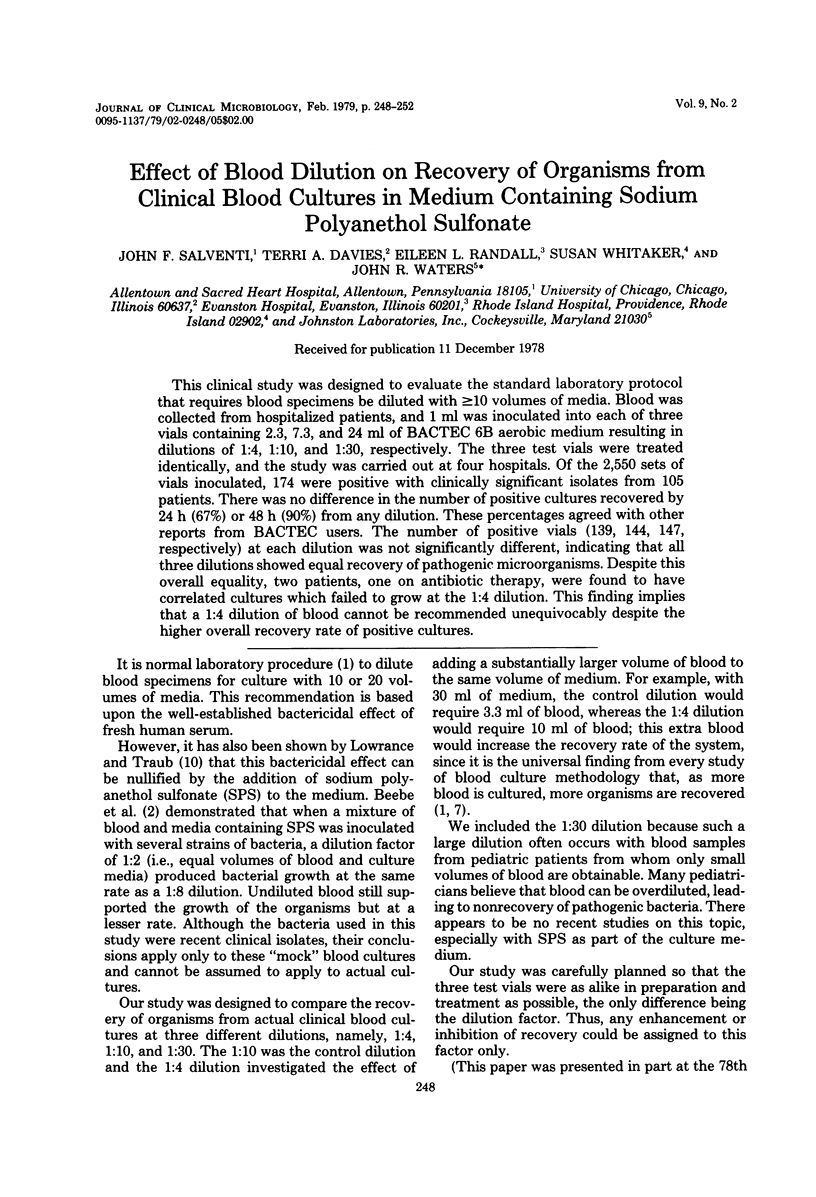
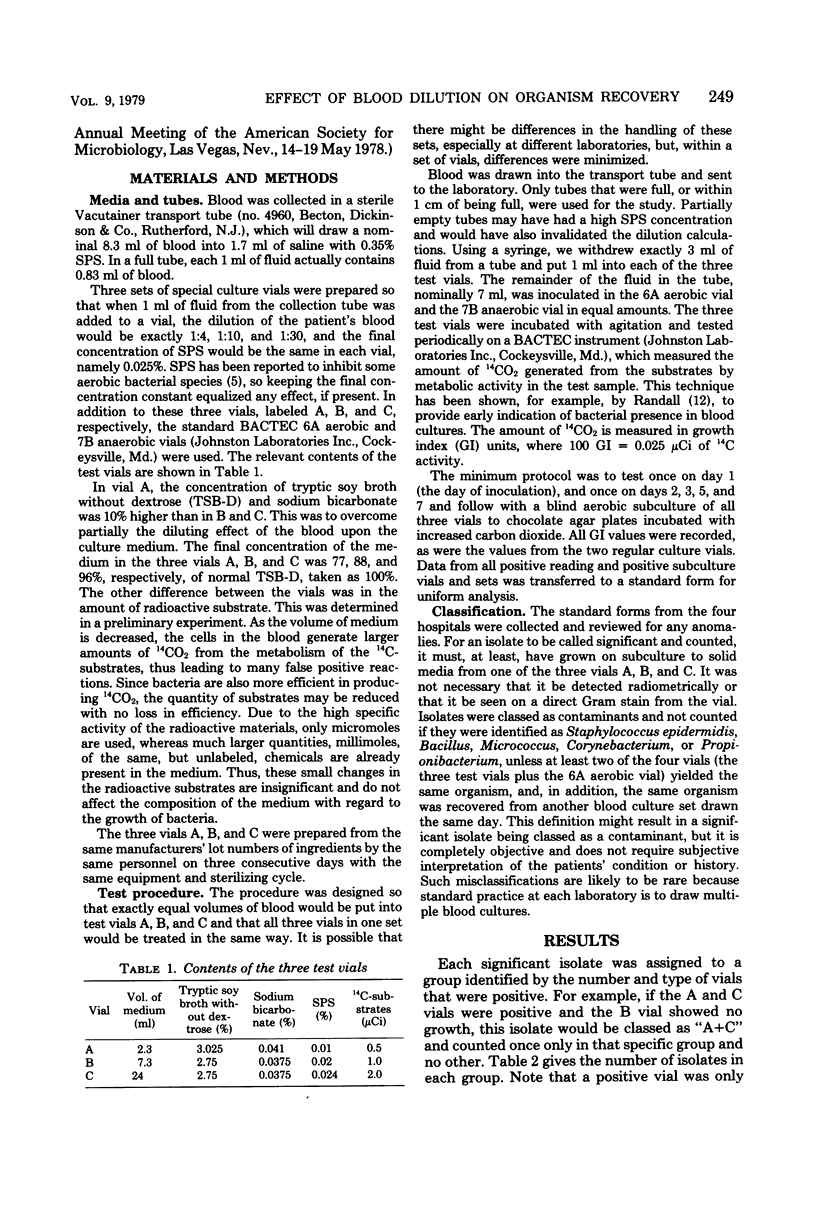
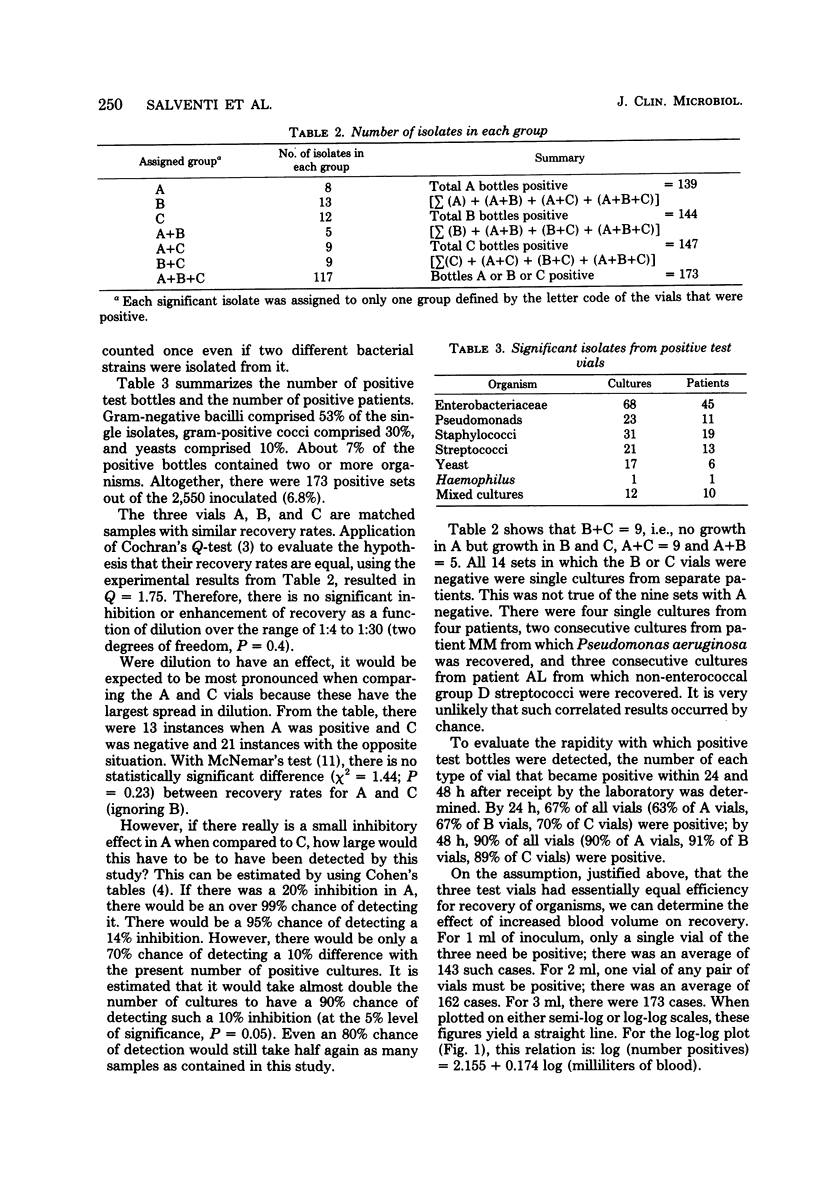
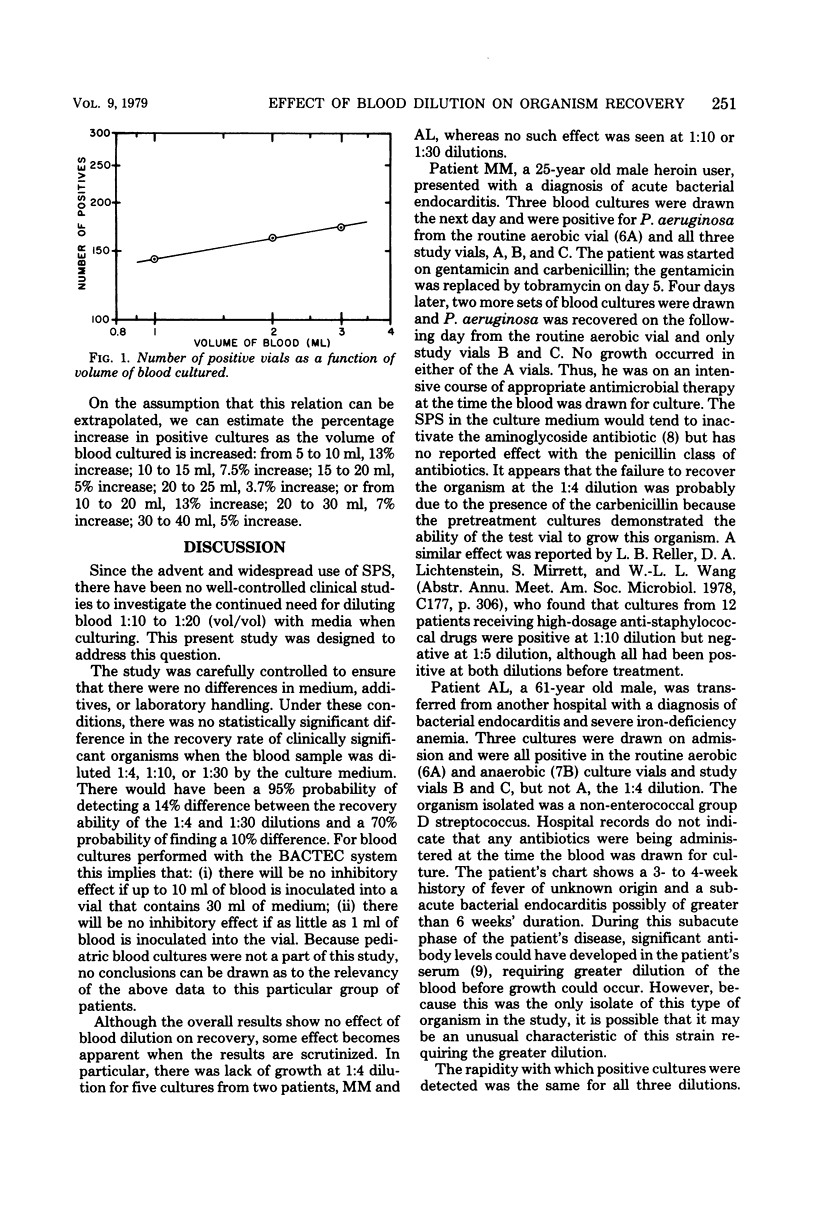
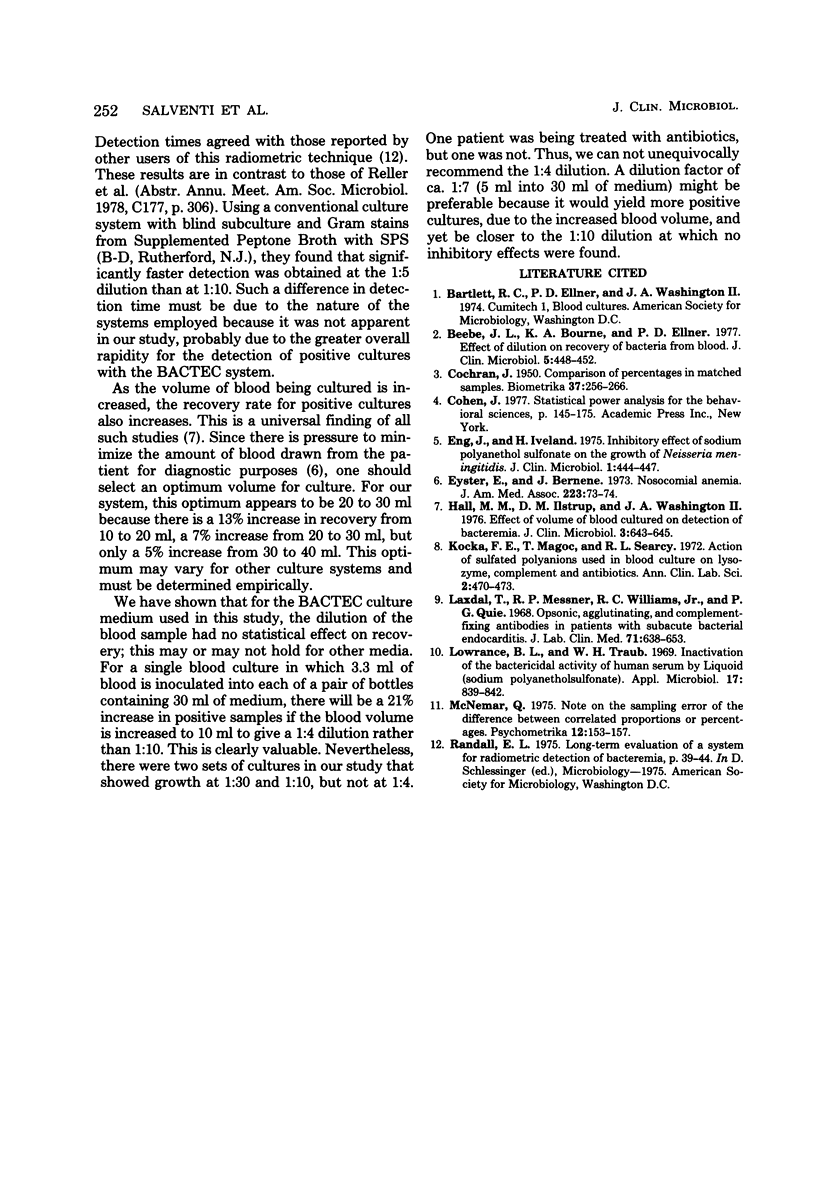
Selected References
These references are in PubMed. This may not be the complete list of references from this article.
- Beebe J. L., Bourne K. A., Ellner P. D. Effect of dilution on recovery of bacteria from blood. J Clin Microbiol. 1977 Apr;5(4):448–452. doi: 10.1128/jcm.5.4.448-452.1977. [DOI] [PMC free article] [PubMed] [Google Scholar]
- COCHRAN W. G. The comparison of percentages in matched samples. Biometrika. 1950 Dec;37(3-4):256–266. [PubMed] [Google Scholar]
- Eng J., Iveland H. Inhibitory effect in vitro of sodium polyanethol sulfonate on the growth of Neisseria meningitidis. J Clin Microbiol. 1975 May;1(5):444–447. doi: 10.1128/jcm.1.5.444-447.1975. [DOI] [PMC free article] [PubMed] [Google Scholar]
- Eyster E., Bernene J. Nosocomial anemia. JAMA. 1973 Jan 1;223(1):73–74. [PubMed] [Google Scholar]
- Hall M. M., Ilstrup D. M., Washington J. A., 2nd Effect of volume of blood cultured on detection of bacteremia. J Clin Microbiol. 1976 Jun;3(6):643–645. doi: 10.1128/jcm.3.6.643-645.1976. [DOI] [PMC free article] [PubMed] [Google Scholar]
- Kocka F. E., Magoc T., Searcy R. L. Action of sulfated polyanions used in blood culture on lysozyme, complement and antibiotics. Ann Clin Lab Sci. 1972 Nov-Dec;2(6):470–473. [PubMed] [Google Scholar]
- Laxdal T., Messner R. P., Williams R. C., Jr, Quie P. G. Opsonic, agglutinating, and complement-fixing antibodies in patients with subacute bacterial endocarditis. J Lab Clin Med. 1968 Apr;71(4):638–653. [PubMed] [Google Scholar]
- Lowrance B. L., Traub W. H. Inactivation of the bactericidal activity of human serum by liquoid (sodium polyanetholsulfonate). Appl Microbiol. 1969 Jun;17(6):839–842. doi: 10.1128/am.17.6.839-842.1969. [DOI] [PMC free article] [PubMed] [Google Scholar]


